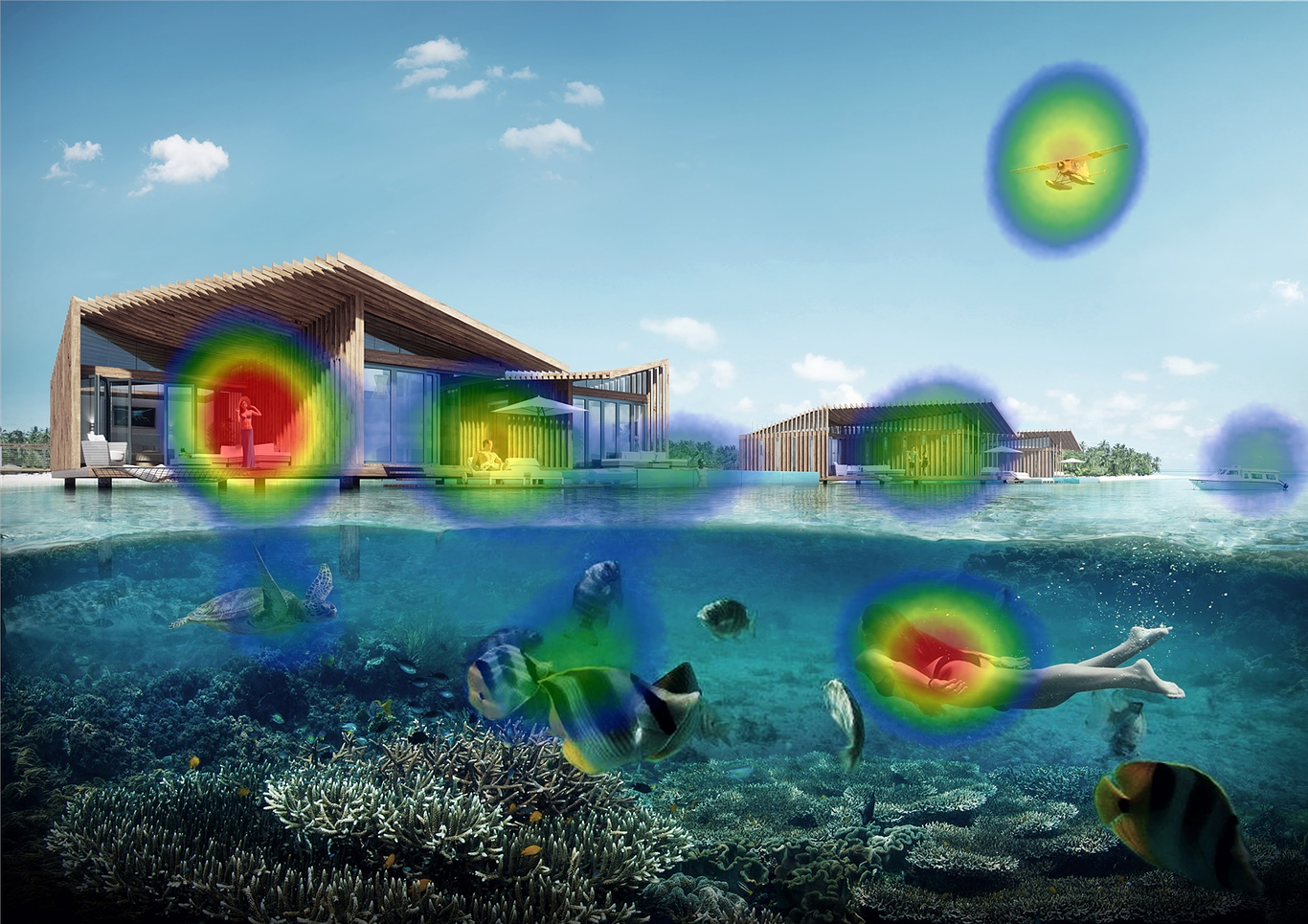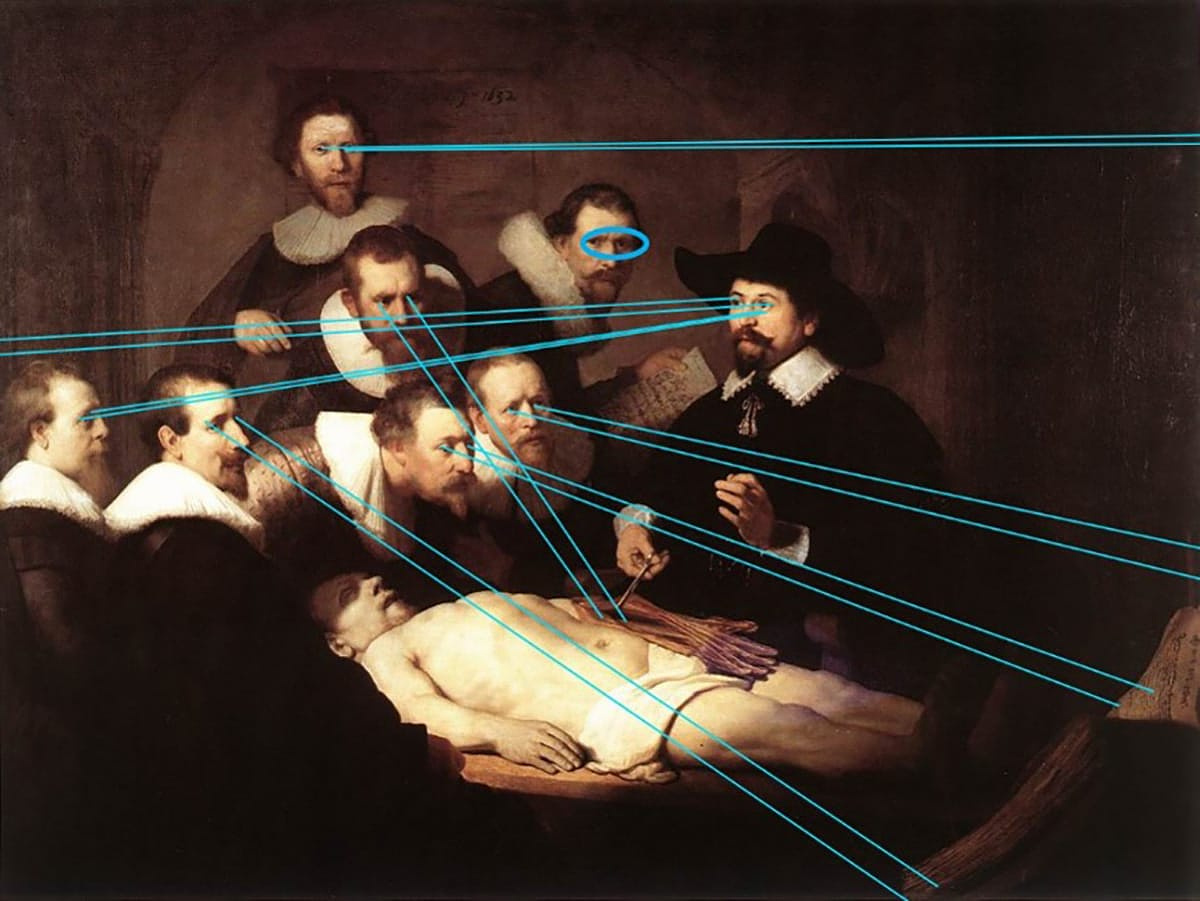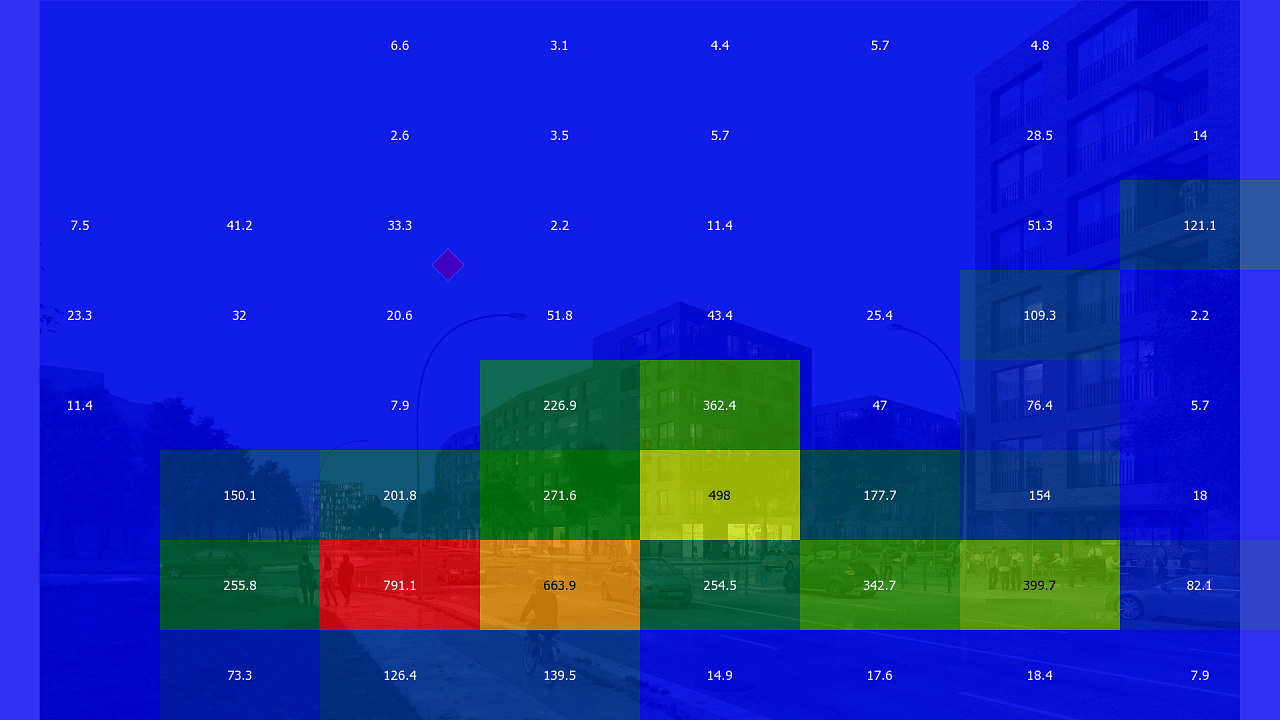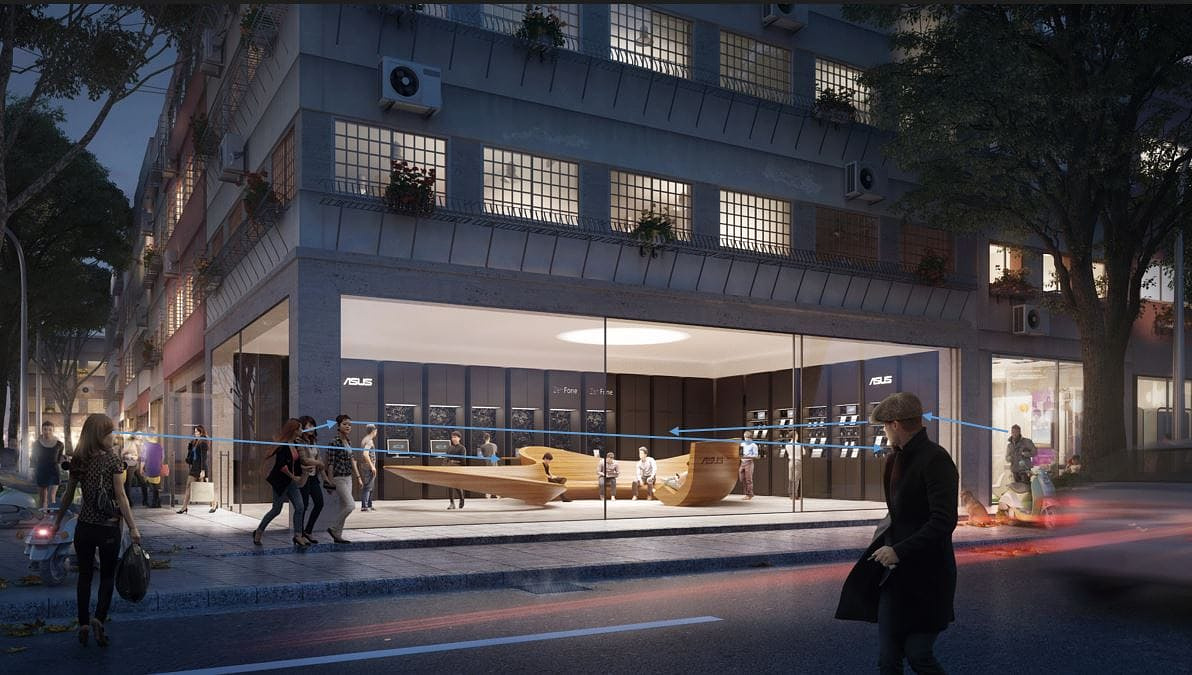Other
Eye on Architectural Visualization
Brick Visual started to use eye tracking to collect data on the perception of architectural visualizations, but how it helps the process of converting ideas into engaging imagery?
You might have wandered through a gallery and got stopped by a painting that truly just captivated you somehow or just marveled at a picture and wondered: why am I feeling so lost in it? The answer mostly lies in good composition that leads your eyes. In classical art you can find absolutely genius examples, just look at this one from Rembrandt. Your eyes will unintentionally follow a route that thousands of people experienced on the first occasions they saw this piece.
You might have wandered through a gallery and got stopped by a painting that truly just captivated you somehow or just marveled at a picture and wondered: why am I feeling so lost in it? The answer mostly lies in good composition that leads your eyes. In classical art you can find absolutely genius examples, just look at this one from Rembrandt. Your eyes will unintentionally follow a route that thousands of people experienced on the first occasions they saw this piece.
Basic composition elements like rule of thirds or the golden ratio were introduced centuries ago, no matter how technics and technologies evolved, these principles remained untouched – creating a good VR visualization lies on the same premises as an oil painting.
Composition not only makes a picture aesthetically valuable, but helps perception and as mentioned above, it leads the eyes of the viewer. It is a powerful tool to affect the comprehension of visual information.
As in every artistic field, in architectural visualization composition is crucial.
Think about these products as visual pitches, like an engaging speech with great emphasis, clear structure and fitting tone. Composition is the structure of images.
Composition not only makes a picture aesthetically valuable, but helps perception and as mentioned above, it leads the eyes of the viewer. It is a powerful tool to affect the comprehension of visual information.
As in every artistic field, in architectural visualization composition is crucial.
Think about these products as visual pitches, like an engaging speech with great emphasis, clear structure and fitting tone. Composition is the structure of images.
Regarding composition there are several factors that lead the eyes and affect the understanding and engagement of an image or video.
Consciously using composition elements deeply determines the way we see and comprehend what we are looking at. Factors such as depth, luminance, contrast and colors, and beside; psychological and neurobiological factors, like characters, the direction of the look of characters, are all shape our observation.
For centuries only empirical data was available about the effectiveness of using composition, recently with the help of eye tracking, we can track, capture and explore the route of our gaze.
Consciously using composition elements deeply determines the way we see and comprehend what we are looking at. Factors such as depth, luminance, contrast and colors, and beside; psychological and neurobiological factors, like characters, the direction of the look of characters, are all shape our observation.
For centuries only empirical data was available about the effectiveness of using composition, recently with the help of eye tracking, we can track, capture and explore the route of our gaze.
How architectural visualization can use these data?
Architectural visualizations’ main aim is to translate designs and architecture concepts into engaging visual products such as still images, movies or VR/ AR experiences.
Visualizations let their viewers see yet not built projects in their context, even tell stories and showcase surrounding future human activity. Visualizations help to communicate mood, features, elements, details and help to understand the architectural concept.
Visualizations let their viewers see yet not built projects in their context, even tell stories and showcase surrounding future human activity. Visualizations help to communicate mood, features, elements, details and help to understand the architectural concept.
Now, with the help of eye tracking, we have access to data that shows how viewers see these images and videos.
At Brick Visual we have made the first rounds of in-house tests to gather information about the perception of 3D artists and non professionals. We have always used artistic tools such as composition, shading, colors, luminance, based on classical craftsmanship, cinematography and photography to consciously create engaging images, but have never had the chance to collect data on their empirically proven effectiveness.
Based on our mini experiments, we already discovered some tendencies that are not only helping us, but are useful to the whole archviz industry.
The first round of the experiment was executed on 38 people (both 3D artists and non professionals) and it was the first small baby step in a comprehensive research in the near future, when we will include more test subjects from different target groups and even more images and videos.
Based on our mini experiments, we already discovered some tendencies that are not only helping us, but are useful to the whole archviz industry.
The first round of the experiment was executed on 38 people (both 3D artists and non professionals) and it was the first small baby step in a comprehensive research in the near future, when we will include more test subjects from different target groups and even more images and videos.
What have we learnt so far?
1, Humans are the main focus of attention…
As humans, we are highly social and dependant on each other and as a result we evolved in a way that our brain has a dedicated part to process faces and we are very good at it. Every human can recognise hundreds of faces and even see them in inanimate objects.
It hardly comes as a surprise that we are highly sensitive to pictures of faces and other humans. If you look at the heatmap of our pictures, you can see that the brightest red hotspots are always humans.
Architectural visualizations almost always created with characters and not just for aesthetic purposes. Humans can help to communicate the architectural concept, put a picture into context, feel the scale of the environment, their presence tells small stories and effect the overall vibe of the picture.
It hardly comes as a surprise that we are highly sensitive to pictures of faces and other humans. If you look at the heatmap of our pictures, you can see that the brightest red hotspots are always humans.
Architectural visualizations almost always created with characters and not just for aesthetic purposes. Humans can help to communicate the architectural concept, put a picture into context, feel the scale of the environment, their presence tells small stories and effect the overall vibe of the picture.
2, … but characters won’t deflect attention from the buildings – they create engagement
It turned out, that people spend more time looking at pictures with characters and it’s more engaging to them. The message we want to communicate can be delivered more accurately, is easier to understand and process simply because the viewers unintentionally spend more time with these visualizations.
3, The direction of gaze really matters
3, The direction of gaze really matters
As you can see on the picture below, the direction of the look of characters is highly important. It’s an instinct to follow the gaze of others, as it could save us from possible life threats. We are wired to look, where others look.
The main character stares into the building, we follow his gaze, then we slowly realise the others and follow their directions of look, while we discover every small detail of the picture.
The main character stares into the building, we follow his gaze, then we slowly realise the others and follow their directions of look, while we discover every small detail of the picture.
4, Additional elements encourage active involvement
Small, interesting elements are the key to encourage active involvement. By adding depth and fascinating details will invite the viewer to spend more time with discovering different aspects of the visualization.
In this case, additional elements tell a story, it communicates the architectural concept and its features, as they are showcasing that the house is actually floating above an underwater paradise, where users can swim or snorkel, enjoying a relaxing time. By creating a strong message visually, the picture becomes a strong, communicative, engaging content, ready to convince the viewer.
In this case, additional elements tell a story, it communicates the architectural concept and its features, as they are showcasing that the house is actually floating above an underwater paradise, where users can swim or snorkel, enjoying a relaxing time. By creating a strong message visually, the picture becomes a strong, communicative, engaging content, ready to convince the viewer.
5, Movement determines
Of course this principles are also true in case of movies and animations. A moving character, or just movement will capture your attention instantly.
By placing a moving character into a visualization will always grab the eyes of the viewer. It’s also a deeply rooted instinct in us from early infancy. Sensing motion is a crucial part of human survival, just think about crossing a busy crossroad. Just like our ancestor, we are highly sensitive to movement.
By placing a moving character into a visualization will always grab the eyes of the viewer. It’s also a deeply rooted instinct in us from early infancy. Sensing motion is a crucial part of human survival, just think about crossing a busy crossroad. Just like our ancestor, we are highly sensitive to movement.
Check out the example. We emphasized the indoor pool by rendering a swimming character in it, without him no one would have ever recognized the pool.
Details and the specification of the experiment
Software: SMI BeGaze
Hardware: SMI RED-M 120 Hz
Nr. of participants: 38
Hardware: SMI RED-M 120 Hz
Nr. of participants: 38
We showed 12 pictures each for 7 seconds, and a short video, followed by the following questions:
Have you worked on this picture or have you ever seen it?
What do you think what this picture says?
How did you like the picture? (5 very much liked – 1 did not like it at all)
How much the message of this picture is for you? (5 very much – 1 not at all)
How do you feel the picture credible?
You can download all the results and metrics from the following google drive link.
https://goo.gl/Fie7d7
Have you worked on this picture or have you ever seen it?
What do you think what this picture says?
How did you like the picture? (5 very much liked – 1 did not like it at all)
How much the message of this picture is for you? (5 very much – 1 not at all)
How do you feel the picture credible?
You can download all the results and metrics from the following google drive link.
https://goo.gl/Fie7d7
You must be logged in to post a comment. Login here.






